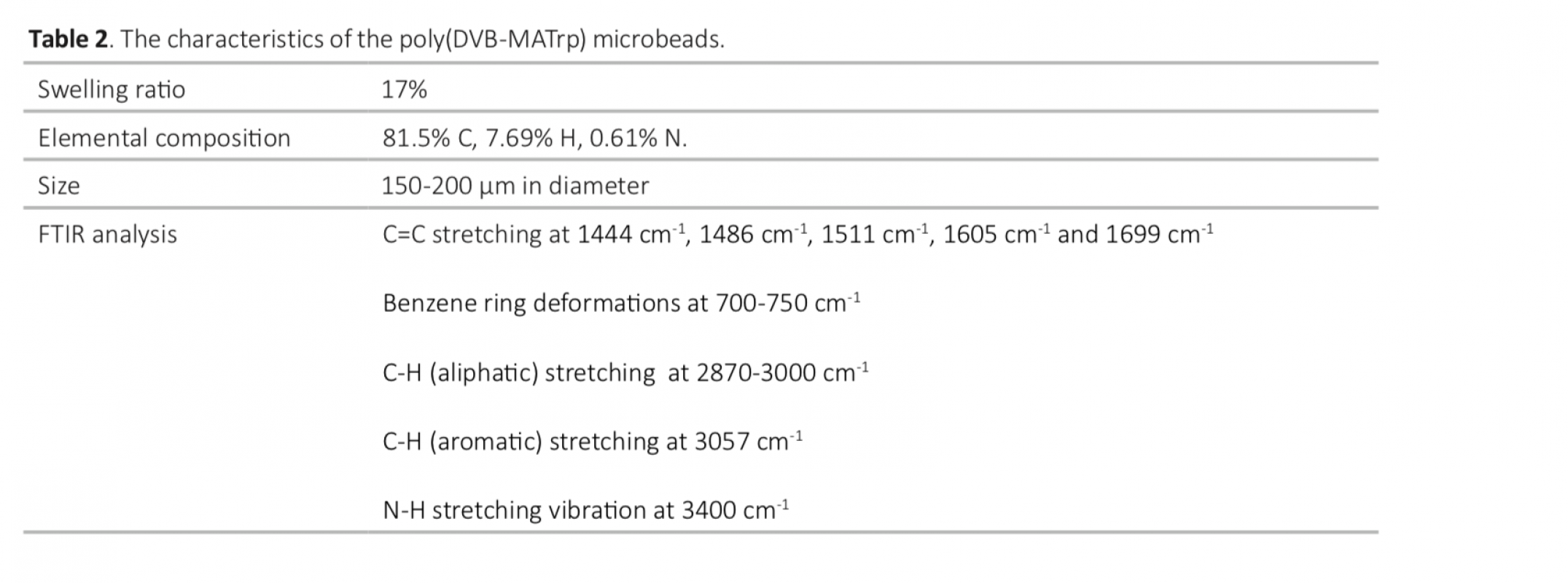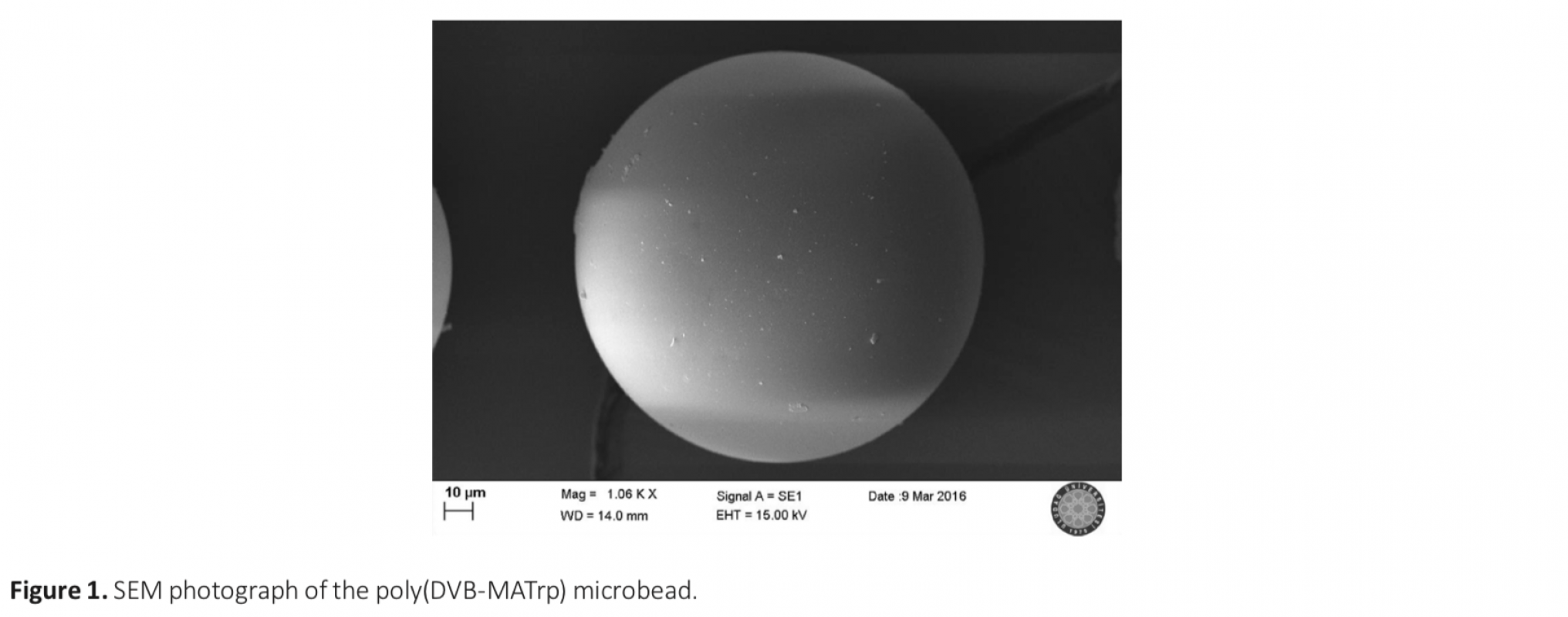In this study, hydrophobic poly(divinylbenzene-N-methacryloyl-L-tryptophan methyl ester) [poly(DVB-MATrp)] microbeads (average diameter = 150-200 μm) were used for diethyl phthalate (DEP) removal from aqueous solution. The poly(DVB- MATrp) microbeads were synthesized by suspension polymerization. The microbeads were used for DEP adsorption from aqueous solution to determine the effect of pH, initial DEP concentration, temperature and contact time on the adsorbed amounts of DEP. The effect of initial DEP concentration was investigated in the concentration range of 1-300 mg/L at pH 3.0. The experiments were conducted at three different temperatures (25°C, 35°C and 45°C). The maximum DEP adsorption capacity was calculated as 251.3 mg/g at pH 3.0 (25°C). The adsorbed amount of DEP onto the poly(DVB-MATrp) was decreased with increasing temperature due to the exothermic nature of the adsorption. The kinetic studies demonstrated that the adsorption process reached equilibrium at around 30 min. The Langmuir isotherm model fitted the adsorption data. The pseudo-first-order and pseudo-second-order kinetic models were employed to evaluate the adsorption process. The prepared microbeads were repeatedly used for DEP adsorption without a significant change in the adsorption capacity. The poly(DVB-MATrp) microbeads were also effectively used in bottled, and tap water samples spiked with DEP.
Bu çalışmada, hidrofobik poli(divinilbenzen-N-metakriloil-L-triptofan metil ester) [poli(DVB-MATrp)] mikroküreler (ortalama çap: 150-200 μm) sulu fazdan dietil fitalat (DEP) uzaklaştırılması için kullanıldı. Poli(DVB-MATrp) mikroküreler süspansiyon polimerizasyonu ile sentezlendi. Mikroküreler pH, başlangıç DEP derişimi, sıcaklık ve temas süresinin adsorplanan DEP miktarına etkisinin belirlenmesi amacıyla sulu çözeltiden DEP adsorpsiyonunda kullanıldı. Başlangıç DEP derişiminin etkisi 1-300 mg/L (pH 3.0) derişim aralığında araştırıldı. Deneyler üç farklı sıcaklıkta (25°C, 35°C and 45°C) gerçekleştirildi. Maksimum DEP adsorpsiyon kapasitesi pH değeri 3.0 olan sulu çözeltide 251,3 mg/g (25°C) olarak hesaplandı. Adsorpsiyonun ekzotermik doğasından dolayı poli(DVB-MATrp) mikroküreler üzerine adsorplanan DEP miktarı artan sıcaklıkla azalış gösterdi. Kinetik çalışmalar adsorpsiyonun yaklaşık 30 dakikada dengeye ulaştığını kanıtladı. Adsorpsiyon Langmuir izoterm modeline uygun olarak gerçekleşti. Adsorpsiyon verilerinin değerlendirilmesi için yalancı-birinci derece ve yalancı-ikinci derece kinetik modeller kullanıldı. Hazırlanan mikroküreler DEP adsorpsiyon kapasitesinde belirgin bir değişiklik olmaksızın tekrar tekrar kullanıldı. Poli(DVB-MATrp) mikroküreler aynı zamanda DEP katılmış şişe suyu ve çeşme suyu örneklerinde etkin olarak kullanıldı.




Download Article in PDF (789.2 kB)